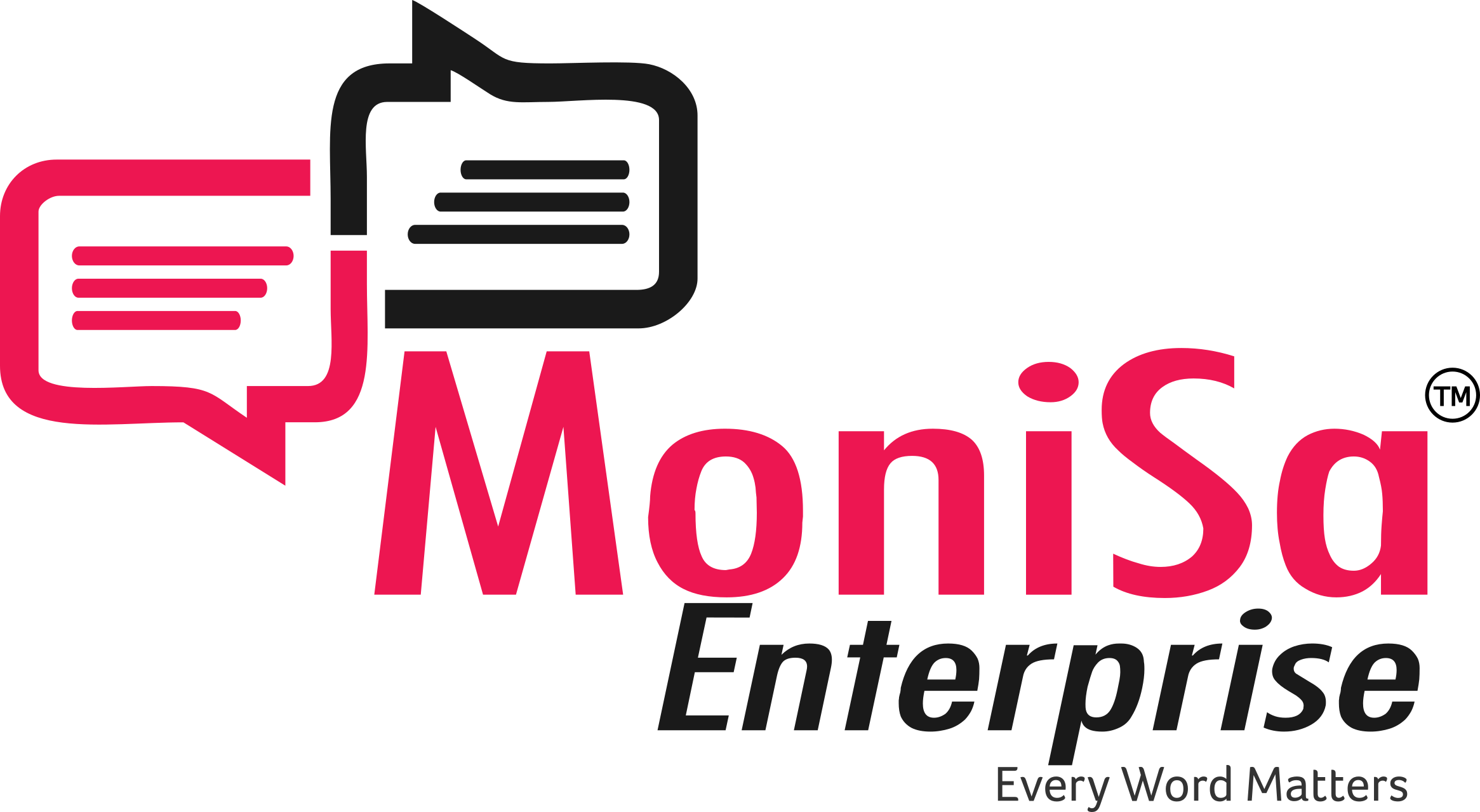A Comprehensive Overview: English to Malayalam Translation
Table Of Contents
- 1 A Comprehensive Overview: English to Malayalam Translation
- 2 Malayalam to English Translation, Explained
- 3 Why It Matters (Especially for Managers)
- 4 What happens when that nuance is lost?
- 5 Key Benefits of High-Quality Malayalam to English Translation
- 6 Common Pitfalls & How to Dodge Them
- 7 How MoniSa Enterprise Helped an EdTech Scale Translation Efficiently
- 8 Actionable Strategies for Malayam to English Translation
- 9 Conclusion
One word. That’s all it takes to change meaning, tone, or lose your customer entirely. That mindset could cost you context, culture, and connection. In real-world localization, nuance is everything. One missed meaning could shift the message—or lose the audience entirely.
Bad translation doesn’t just confuse users—it damages trust, delays launches, and increases costs. Whether you’re localizing a product for the Kerala market or translating user-generated content into English for global access, the need for accurate, culturally relevant Malayalam to English translation has never been greater.
But what does quality translation really involve?
What tools, teams, and techniques can help?
Let’s break it all down—with actionable advice from the team at MoniSa Enterprise, your go-to for high-stakes linguistic services.
Malayalam to English Translation, Explained
Malayalam, spoken by over 38 million people, is packed with:A) Intricate grammar structures.
B) Regional slang and idioms.
C) Formal and informal tone levels.
D) Deep cultural references rooted in history, religion, and society.
Translating Malayalam to English goes beyond simple word-for-word conversion. It’s about capturing intent, preserving cultural context, and ensuring your content reads naturally to an English-speaking audience—whether that’s in the U.S., U.K., or elsewhere.
Why It Matters (Especially for Managers)
“Just use Google Translate” won’t cut it.Malayalam is a high-context language. A single word can imply mood, relationship, and even time of day depending on tone and structure.
For example:
Literally: “Feels good to see you.”
What happens when that nuance is lost?
A) Confused product messaging
B) Legal misinterpretations
C) Cultural backlash on social media
D) Poor UX and reduced adoption rates
Key Benefits of High-Quality Malayalam to English Translation
Working with the right Malayalam language translator or team of linguists offers measurable benefits:
A) Improved Accuracy
Content that clearly conveys the intended message, minimizing back-and-forth clarification.
B) Faster Time-to-Market
Reduced rounds of editing and correction mean quicker rollouts.
C) User Engagement
Culturally resonant translations increase user trust and product adoption.
D) Brand Credibility
High-quality language builds confidence in your brand across markets.
E) Cost Efficiency
Avoiding rework and mitigating risks reduces the overall cost of localization.
Common Pitfalls & How to Dodge Them
A) Literal Translations
Pitfall: Translating “നല്ലത്” (nallathu) strictly as “good” might strip the context—this word can mean “pleasant,” “lovely,” or even sarcastically “That’s nice” in Malayalam.
Solution: Always pair any Malayalam language translator (human or AI) with a contextual check. Ask: Is this the literal meaning or the intended meaning?
B) Over-Reliance on Machine Translation
Pitfall: Relying solely on Google Translate or any app can produce stiff, awkward phrases that sound robotic in English.
Solution: Use these tools as a starting draft only. Then, bring in an expert who understands the subtleties of Malayalam. That’s how best language translators operate.
C) Ignoring Cultural & Emotional Nuances
Pitfall: Overlooking local references—like Onam, Sadhya, or the friendly slang “ഇടയക്കിട്ടു” (eda yakittu, an exclamation)—leaves your English version feeling bland.
Solution: The best language translation services incorporate cultural checklists, ensuring your final copy isn’t just correct but also alive.
D) Inconsistent Brand Voice
Pitfall: Using multiple freelancers or random software without style guidelines leads to disjointed translations.
Solution: Maintain brand consistency by having a centralized glossary and a style guide. This helps preserve tone across. different content pieces.
How MoniSa Enterprise Helped an EdTech Scale Translation Efficiently
A) Client: An India-based EdTech company.
B) Challenge: Translating Malayalam educational content into English for a North American audience.
C) Approach:
- Created a two-phase translation workflow with native Malayalam linguists and native English editors.
- Used CAT tools to ensure consistent terminology.
- Implemented a cultural QA layer for improved relatability.
D) Results:
- 99.2% accuracy across translated content.
- 27% faster delivery compared to in-house-only efforts.
- 3x increase in engagement from English-speaking users.
This case underlines the impact of a well-structured, human-led translation strategy combined with technology.
How is your current translation process holding up? If your workflows feel inconsistent or your translations don’t reflect your brand voice, it may be time to rethink your strategy.
MoniSa Enterprise offers tailored translation and localization solutions designed for teams that demand precision, cultural intelligence, and results.
Contact us to explore how we can help make your message resonate—across borders and across languages.
Actionable Strategies for Malayam to English Translation
Here’s where we talk about solutions you can implement right now. Whether you manage a small project or oversee a multinational rollout, these tips will help.
A) Create a Centralized Terminology Base
A living document (or software platform) containing your key terms—tech jargon, product names, brand phrases—in both Malayalam and English.
Because, it saves you from “reinventing the wheel” every time a new translator steps in. Speeds up projects and ensures consistency.
B) Build a Glossary for Slang & Idioms
Sample Slang: “അങ്ങോട്ട് വാരിക്കോ” (angotte vaarikko) literally means “come over here.” But in certain contexts, it might feel casual or even commanding.
Document how you want such phrases rendered in English. For instance, “Hey, come on over!” might suit your brand’s casual tone.
C) Use a Two-Tier Translation Process
Draft by Machine or Junior Translator: Quick and cost-effective.
Review by Senior/Near-Native Linguist: They refine the text for cultural accuracy, fluidity, and brand alignment.
D) Micro-Localization for Different English Markets
Why bother? Because American English might favor a phrase like “That’s awesome,” while British English might say “That’s brilliant.” Here’s the catch, if you have a global audience, segment your English translations. This minor tweak can lead to major improvements in user engagement.
E) Cultural QA (Quality Assurance)
Checklist:
- Check images or graphics for cultural relevance.
- Verify that references to local festivals or traditions are contextually appropriate.
- Watch out for phrases that might be taboo or insensitive in certain English-speaking regions.
Remember: It’s not just about grammar. It’s about preserving the essence of Malayalam while making it accessible and engaging in English.
Conclusion
Getting Malayalam to English translation right isn’t just about bridging language gaps—it’s about fostering genuine connections, driving brand loyalty, and opening up new markets.
The payoff? More engaged customers, fewer misunderstandings, and a reputation that translates into trust around the globe.
The real challenge is building a scalable, efficient workflow that balances quality, speed, and cultural sensitivity. With the right tools, partners, and processes, you can turn translation from a bottleneck into a strategic asset. So, let’s make sure your content doesn’t get lost in translation.
Talk to MoniSa Enterprise and set your next localization project up for success.


